1
2
3
4
5
6
7
8
9
10
11
12
13
14
15
16
17
18
19
20
21
22
23
24
25
DTE 82

Original releasedate: 15 January 1982

Original releasedate: 15 January 1982
This is a rough'n'ready translation of the magazine which was original in the Dutch language.
Besides this is only a summary as only the most interesting parts are translated.
Besides this is only a summary as only the most interesting parts are translated.
| From the Headoffice |
|
Hello everybody, From the Headoffice we wish you all a happy new 1982. This year looks going to be a very good one. Rainbow will be in the studio with a new keyboard player and a tour will follow in the summer. In this issue a goodbye story about Don Airey who left Rainbow last October, after the 1981 worldtour. Besides that there is an article over the birth of Deep Purple. Gerrit SO LONG, MR AIREY The list is getting long: Craig Gruber, Mickey Lee Soule, Gary Driscoll, Jimmy Bain, Tony Carey, Mark Clarke, David Stone, Bob Daisley, Ronnie James Dio, Cozy Powell, Graham Bonnet and now also, Don Airey. They all twelve have one thing in common: they all can call themselves ex-Rainbowmember. Don Airey left Rainbow officially on the 1st of December, after rumours among insiders were going on about it for some weeks. I feel sad about Don leaving, because I think he was the most talented keyboards player Rainbow had so far. Don is born on 21 June 1950. His parents made him take pianolessons, he takes them reluctantly. But then he starts to like it when he discovers the use of classical music for playing popmusic. Despite his trying to get in a steady group, he don't have any success. In the early seventies his zeal is rewarded as he gets a lot of sessionwork. He's on many hitsingles playing the keyboards, especially on productions of Mickie Most. At one the sessions he meet Cozy Powell.  They get along well, but Don lose touch with Cozy, when he joins Jeff Beck. Years later, autumn 1973, Cozy forms his own band, after his group BEDLAM after one album don't have the success needed. It's HAMMER. Cozy Clive takes bassplayer Chaman from the group of Jeff Beck and Bedlam-singer Frank Aiello. Guitarplayer is the, then unknown studiomusician Bernie Marsden. Powell also want to have a keyboardplayer. He recollect the organplayer from a few years before. Airey who didn't had much of success in those years is keen to join the band. The first single, the instrumental "Dance with the devil", is right away an international hit.
They get along well, but Don lose touch with Cozy, when he joins Jeff Beck. Years later, autumn 1973, Cozy forms his own band, after his group BEDLAM after one album don't have the success needed. It's HAMMER. Cozy Clive takes bassplayer Chaman from the group of Jeff Beck and Bedlam-singer Frank Aiello. Guitarplayer is the, then unknown studiomusician Bernie Marsden. Powell also want to have a keyboardplayer. He recollect the organplayer from a few years before. Airey who didn't had much of success in those years is keen to join the band. The first single, the instrumental "Dance with the devil", is right away an international hit.Chaman is replaced after one month by a friend of Don, bassplayer Neil Murray. Two hits follow: "The man in black" and "Nanana". In April 1975 Cozy put an end to the group. He's fed up with the musicbizz and decide to pick up motorracing. Aiello gets back to do again studio-work and we only see him back in 1981 on Powell's solo album "Tilt". Marsden get to Babe Ruth. On the Ruth LP "Kid's Stuff" (Capitol 5C 062-82160 EMI) there's a song composed by Marsden-Powell-Airey called "Living a lie". Neil Murray and Don Airey play on some tracks of this album. 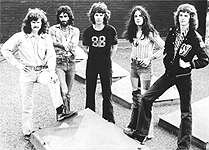 But Don and Neil leave for the new group of drummer Jon Hiseman, Colosseum II. Gary Moore is the guitarplayer. Colosseum II makes complex rock with many jazz-influences. In April 1976 they release their first album "Strange new flesh" (Bronze ILPS 9356). Late '76 the singer Mike Starrs leaves and joins Lucifer's Friend and Murray goes to National Health. Murray is replaced by John Mole, while Moore now does the vocals.
But Don and Neil leave for the new group of drummer Jon Hiseman, Colosseum II. Gary Moore is the guitarplayer. Colosseum II makes complex rock with many jazz-influences. In April 1976 they release their first album "Strange new flesh" (Bronze ILPS 9356). Late '76 the singer Mike Starrs leaves and joins Lucifer's Friend and Murray goes to National Health. Murray is replaced by John Mole, while Moore now does the vocals.In 1977 they released two albums in a short period. In June "Electric savage" (MCA 2800) and in September "Wardance" (MCA 2817). In August 1978 Moore joins Thin Lizzy, in which he used to play back in 1974 already. In Colosseum II he's replaced by Keith Airey, Don's brother. Although Don loves to play in this group, there was a disadvantage. Don: "We didn't have many live gigs. And when we did do a show, the public came to hear only rock. The band was making jazzy music while that movement wasn't popular at that moment at all. Because we were without work for months, I tried to pick up the sessionwork again. It worked out, and I earned some money again. I really needed that, because I couldn't live of the earnings of the Colosseum records. One of my best known sessions were on the "Never say die" album of Black Sabbath. In December 1978 Hiseman made an end to the group. 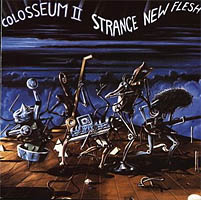
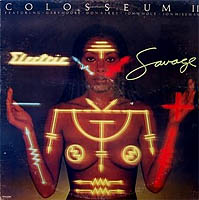
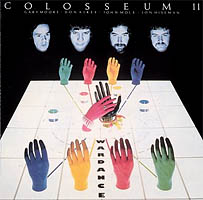 In January '79 Cozy ask Don for the second time in his life if he's interested to join the band he's in. When Don hears that Cozy is going to put up a new band with Ritchie Blackmore, he's over the moon, because Deep Purple was years ago one of his favorite groups. It's the start of the fifth Rainbow line-up, after also Roger Glover and Graham Bonnet joined. Don Airey has been two and a half year the keyboards player in Rainbow. Two long worldtours and the fans who saw him live won't forget him soon. After he joined, keyboards got a much more important role in the band. He did some excellent solos live in "Lost in Hollywood". He proved here he was a master over his keyboards and synthesizers. Don left the group on his own free will. He became good friends with Cozy and Graham. When both of them left the band in 1980, Don became the loner in the group. He didn't found that companionship back with the Americans Turner and Rondinelli. Another reason for his leaving was Blackmore's choice for the live-repertoire. On the last worldtour Blackmore picked mainly old successes, including old Deep Purple songs. Blackmore only did a few new things in the studio and that was not enough for Don. "I don't know why Ritchie play all those old things. I felt limited in my creative possibilities because there was hardly left any room for improvisations. I felt isolated after Joe and Bobby joined, I didn't felt at ease anymore." What is Don going to do now? Like he told the Fanclan before, he'll record early '82 his first solo-album. It'll be a kind of 'concerto for keyboards and orchestra'. Shortly after we got the news that Don had left the band I tried to phone him. Initially nobody in England knew where he was, but finally I got lucky on Thursday 17 December. Hello Don. This is Gerrit of the Dutch Fanclub. I wanted to ask you about your plans for the future. Don: After Christmas I'll take time for my solo-album. We'll try to release it around Eastern. It will be a record with the help of an orchestra. Can we compare it with what Jon Lord has done? Don: Maybe the organization, but the music will be different because I'm another person. We also heard tales of a new cooperation with Graham Bonnet. Don: That's right. He wants to do another album and asked me to play on it. I also should have played on his first solo-album, but I was busy then with the world-tour of Rainbow. Also my old pal Gary Moore asked me for his new album. After the time in Colosseum he has always been a good friend. Alright, Don, there's a rumour going on that says that there'll be a new group with you, Graham Bonnet and Cozy Powell. How about that? Don: I can be brief. Graham didn't told me yet that he was ready again to do live-shows, so the gutter press is better informed than me. Well, Don, from all the fans in Holland I wish you a merry christmas and a happy new year lots of luck in the future. RAINBOW GOES ON WITH DAVID ROSENTHAL After the end of the worldtour 1981 it became very quiet around the band. Pessimists feared the worst. But the news of the departure of Don Airey meant they were most likely still going on. Don is replaced by the totally unknown American DAVID ROSENTHAL! We can't tell hardly anything about this new member on the moment. Hopefully we know something more in the next issue. Late November Ritchie, Roger, Joe and Bob together with David left for Montreal to record a new album. THE BIRTH OF DEEP PURPLE Frequently we get letters with the question "How did Deep Purple started?", many times be accompanied by the remark "is it true that.....". There are quite a few sensation stories about how they started with many untruth rumours. So here's a story about what happened late '67/early '68...... 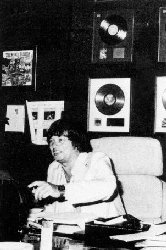
THE IDEA OF TONY EDWARDS Late 1967 one Tony Edwards approached one John Coletta. Edwards ran a doing good textile factory. Tony: "The popmusic did very well in those days. England provided the best groups. But I didn't know anything about the business around it, but I thought it was worth the effort to get a group myself off the ground. I knew, if I should do it the right way, I could earn a lot of money. That's why I went to John Coletta. He was a wellknown publicity agent and he was the person who know how to set up the publicity campaign. He liked the idea. We got together some nights and got on paper what we should do. The problem was to get the musicians together. Me nor John knew anybody in the musicbizz, but a friend of mine knew someone, who was lookin' for musicians for to start a band. That was Chris Curtis. Chris was known as drummer of The Searchers. This group from the mid-sixties had a few big hits, but Chris left because he wanted his own group. He seemed the right chap to start with, also because he was not a total stranger in the music world." THE ARRIVAL OF LORD & SIMPER  Curtis got the order of John and Tony to put together a group. Chris lived in a flat in London and knew that in the same flat lived an organ player, he heard before:
Curtis got the order of John and Tony to put together a group. Chris lived in a flat in London and knew that in the same flat lived an organ player, he heard before:Jon Lord. In an interview in 1971 Jon told: "I just agreed to tour with the Flower Pot Men. This group was an idea of some songwriters and studiomusicians who released a single, that became all of a sudden a worldwide hit, "Let's go to San Francisco". There was call for live shows of a band that didn't existed. So they needed to put together a band quickly, to earn money out of it. The first organplayer had an accident, and they asked me and I thought it was alright after the bluesgroup Santa Barbara Machine Head failed. I just came home after rehearsals, when Chris rang my bell. He asked me if I was interested to start a new band with him. Financial it shouldn't be a problem as John en Tony were going to put money in it. I liked the idea and agreed." But Jon first had to do a tour with the Flower Pot Men in January 1968. In those weeks Jon got good friends with the bassplayer, Nick Simper. One night Jon asked him to join him in the new band. Nick agreed when Jon told him there was no financial risk. On 24 February they did the last show with the Flower Pot Men. BLACKMORE: FIRST NO, LATER YES 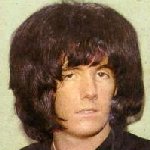 In the mean time Curtis continued searching for new members. He had his eye on one Ritchie Blackmore as the new guitarplayer. He knew Ritchie was a sensation in the early sixties in Lord Sutch and heard he was without a band for some time. Ritchie lived since 1965 in Hamburg. Chris invited Ritchie by telegram to come to London to talk about a new band. Ritchie later in a interview: "I lived for some time in Hamburg and kept myself, wife and son alive by
playing as a session-guitarplayer for Polydor and various record-releases. I didn't earn a lot.
In the mean time Curtis continued searching for new members. He had his eye on one Ritchie Blackmore as the new guitarplayer. He knew Ritchie was a sensation in the early sixties in Lord Sutch and heard he was without a band for some time. Ritchie lived since 1965 in Hamburg. Chris invited Ritchie by telegram to come to London to talk about a new band. Ritchie later in a interview: "I lived for some time in Hamburg and kept myself, wife and son alive by
playing as a session-guitarplayer for Polydor and various record-releases. I didn't earn a lot.Most part of the day I was practising. Till then I had been in many bands, but mainly hired as guitarplayer on a tour. Once I tried to put up something myself, but both The Three Musketeers and Mandrake Root came off the ground. Then I got that telegram, it looked promising. Besides I didn't had worries about any financial risk." 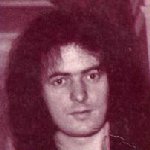 So Ritchie took the plane to London to meet Chris, Jon, Nick, John and Tony. He wasn't satisfied after the conversation. Ritchie: "It looked a right mess. They never played a single note together, but Chris told me how good they were. I think he was a big boaster. And he wanted to play drums and sing. After, on my suggestion, we jammed for an hour or so, I knew he wasn't able to handle either of them." Coletta payed him the plane ticket and Blackmore returned to Hamburg.
So Ritchie took the plane to London to meet Chris, Jon, Nick, John and Tony. He wasn't satisfied after the conversation. Ritchie: "It looked a right mess. They never played a single note together, but Chris told me how good they were. I think he was a big boaster. And he wanted to play drums and sing. After, on my suggestion, we jammed for an hour or so, I knew he wasn't able to handle either of them." Coletta payed him the plane ticket and Blackmore returned to Hamburg.The criticism of Ritchie impressed the others and the man, who started it all, was given the boot. Jon Lord, who noticed Ritchie did have certain qualities, phoned him and persuaded him to give it another try. Ritchie agreed on the condition that his old friend Bobby Woodman (he played in Ritchie's first band) was the man behind the drumkit. Lord agreed. AGAIN CHANGES AND A NAME So Ritchie and Bobby Woodman, who also stayed in Germany, came back to England. Woodman was in those years a living legend in the English scene. He was the first rockdrummer with a double bassdrum. Nick: "Years we didn't hear from him, but we didn't ask about his qualities, just because of his reputation......". Nick came up with a new singer: Dave Curtis (no family of Chris). But after two days they knew Dave was not the right man for the job. They put an ad in Melody Maker. In a unoccupied farm they did the auditions. Tony came up with a name for the band: ROUNDABOUT.  At first they didn't find a singer. And on a moment they considered to continue as an instrumental group.
At first they didn't find a singer. And on a moment they considered to continue as an instrumental group.During the sessions Jon and Ritchie got musically along very well. The stay in the farm was expensive and problems got bigger when Woodman told he didn't felt comfortable with their "circusmusic". He left and the trio Lord-Blackmore-Simper remained. Tony: "John and I backed all the costs. We bought amps and everything that was needed, pay 50 quid rent a week and all the food and drinks. This wasn't what we expected, but thanks to our perseverance we continued. Blackmore did get on with Jon. They were talking about the musical course sometimes for hours. Also Nick fitted in well, but for Woodman this was all too much, too new." EVANS & PAICE FOR AN AUDITION 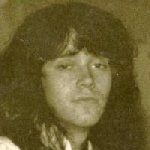 One of the many people who did an audition was Rod Evans. He was the singer of The Maze, a group that was busy for some years without success. He took, to calm his nerves, a friend with him: Maze-drummer Ian Paice. Ritchie could remember himself Evans from his Hamburg days and also Paice was no stranger for him.
One of the many people who did an audition was Rod Evans. He was the singer of The Maze, a group that was busy for some years without success. He took, to calm his nerves, a friend with him: Maze-drummer Ian Paice. Ritchie could remember himself Evans from his Hamburg days and also Paice was no stranger for him.Ritchie: "I once came back from Italy to Hamburg, and I saw this little chap, who I before had seen play in Hamburg. I was trying at time to get a group off the ground and ask this chap if he was interested to play in my new band. But instead of a 'yes' he told me to piss off. I only felt more sympathy for him after that." Paice could climb behind the drumkit left by Woodman right away and Ritchie couldn't resist to tell him how good he was. There was a short moment of uncertainty. Paice only wanted to stay if Evans could stay as well. The others weren't too sure about the qualities of Evans, but they didn't wanna loose Paice. So Evans stayed. DEBUT IN DENMARK 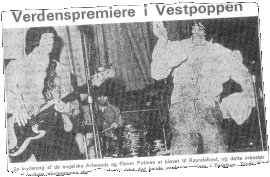 The five Blackmore-Lord-Simper-Paice-Evans practised another two weeks heavily. What musical direction they thought off? Jon: "I saw Vanilla Fudge in 1967 play the Speakeasy and we went wild. We would be the English version of the Fudge." It became soon clear that both Lord and Blackmore had a big ego.
The five Blackmore-Lord-Simper-Paice-Evans practised another two weeks heavily. What musical direction they thought off? Jon: "I saw Vanilla Fudge in 1967 play the Speakeasy and we went wild. We would be the English version of the Fudge." It became soon clear that both Lord and Blackmore had a big ego.They both could do extended solos. The material was, like in most starting bands, mainly covers. But the talents of Jon and Ritchie made the songs hardly recognizable. "Hey Joe" (Jimi Hendrix), songs by the Beatles and Stones and a hardrock-version of "House of the rising sun". This last song became in 1970 a hit by Frijid Pink in a hardrock-version, it sounded a lot like the Purple-version. To try out the material the group was offered to a few clubowners in Denmark and Norway. So the band left with a van for a boattrip and Roundabout did their first show on 20 April 1968 in the small village Tastrup in Denmark. GRAN'S FAVORITE: DEEP PURPLE The next morning, at breakfast, everyone is enthusiastically about that first show, except for Blackmore. Jon Lord: "Ritchie was the last to join the table with a miserable face. We were talking happily, but he didn't say a word. Then I asked him what was wrong, and he only replied: "the name is not good" and started his breakfast. That night after the next show Ritchie picked up the subject. The name of the group attracted the wrong kind of people. "You saw only young kids showed up who want to hear top 40 tunes. A name like Roundabout is something like the Monkees or Tweedle-dee Tweedle-dum. We need something that has a touch of mystery." So someone asked him what it should be. And Ritchie said the historical words "It's Deep Purple". The other liked the idea. John Coletta phoned all the papers and clubowners where they were booked for the next few days to tell that Roundabout wouldn't play but he was able to offer for the same fee a new sensational band called Deep Purple. He ofcourse didn't tell it was the same band. John only told to anybody who was interested: This group is something new in the history of popmusic. They unite Beatles, Stones and Pink Floyd to a new musicdirection. This publicity-slogan got the necessary attention and the Scandinavian press reacted positive. DEBUT ALBUM RECORDED IN 18 HOURS 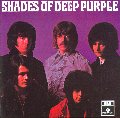 Tony and John had send demotapes to recordcompanies. Only EMI responded. After the negotiations there was a contract for one single and one album on the Parlophone-label. John even arranged a contract with a small American firm (Tetragrammaton) so they also could release the records overthere. A cheap studio was hired and Ritchie asked his old friend Derek Lawrence to produce the debut-album. It was recorded in a four-track studio in two days. SINGLE; FLOP IN U.K. - HIT IN U.S.A.  The first single, "Hush"/"One more rainy day", was released in the first week of June 1968 in England, in the States one week later. In England the record was hardly noticed by the musicpress and DJ's.
The first single, "Hush"/"One more rainy day", was released in the first week of June 1968 in England, in the States one week later. In England the record was hardly noticed by the musicpress and DJ's.While the same song, written by Joe South, on the European continent was a hit for several months for Billy Joe Royal. Purple seemed without standing a chance. One month later. One Monday morning Tony was waked up by a phonecall: "Hey hey hey Tony. Here is Paul, listen. Believe it or not, you've entered the Billboard charts." It was Paul Watkins, label manager of Tetragrammaton in the USA. Tony didn't believed it. "C'mon, Paul. Nobody's buying the record overhere and you claim that.... Stop it." But it was true. Purple was in the American top 100. That day they'd something to celebrated. RITCHIE: THIS IS ONLY THE BEGINNING 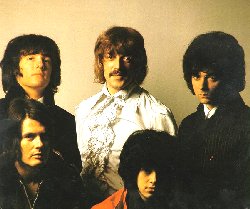 One week later. Again Paul phoned Tony early in the morning. "Here's Paul again. Tony, can you guys get over to the States this week? I arranged a few tv shows, the single went up 30 places and we're expecting it'll get to the top 10. The guys don't have to bring anything, except for the master-tapes of the album, because we want to release that straight away." On Wednesday seven man left for New York with the mastertape. Blackmore insisted on bringing his own guitar, because they were supposed to play live on the tv shows and he didn't wanna play on another instrument. The rest of the week they spend their time in
tv-studios and did their first interview where Ritchie told: "This is only the beginning."
One week later. Again Paul phoned Tony early in the morning. "Here's Paul again. Tony, can you guys get over to the States this week? I arranged a few tv shows, the single went up 30 places and we're expecting it'll get to the top 10. The guys don't have to bring anything, except for the master-tapes of the album, because we want to release that straight away." On Wednesday seven man left for New York with the mastertape. Blackmore insisted on bringing his own guitar, because they were supposed to play live on the tv shows and he didn't wanna play on another instrument. The rest of the week they spend their time in
tv-studios and did their first interview where Ritchie told: "This is only the beginning."The debut-LP "Shades of Deep Purple" was released in the States in the first week of August, one month earlier than in England, and "Hush" was close to the top 10. The album was dedicated to Bobby (Woodman), Chris and Dave (Curtis) and Lord's favorite composer Ravel, like the cover told. In the States everyone was talking about the band, but in England hardly anyone knew who they were. Their first big show in England was on 10 August 1968 on the Sunbury Festival. Indeed, this was only the beginning........ POWELL OF STRENGTH We already wrote an article about Cozy Powell's musical past in October 1980. Since he left Rainbow he only became more popular than before. Powell is one of the few drummers who is not only famous because he's in a certain band, even he was for five years in Rainbow. He'd his name proudly painted on his double bass. It's not that easy to establishment your name when you're a musician, but it's ten times more difficult when you're a drummer. It's maybe because Cozy knows where he's in best and keeps himself to that. He admires drummers from the jazz-world, but he'll never try to exceed them. He knows how to play rock and that's what he does. Cozy started his career by counting the 163 steps and than hitting the triangle in a school orchestra, he gave that up quite fast to take his place behind a real drumkit. He borrowed a Premier drumkit of a friend and started to save up for a Ludwig-set. To earn that money he left for Germany and was playing drums eight hours a day. 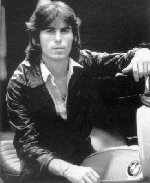 "Unfortunately", Cozy's telling now, "I spend all the saved money, because I had to live and I didn't earned that much. It was a terrible situation. So I had to stay an extra half a year to saved up the money for that kit. When I finally bought that Ludwig-kit it was my pride and joy. It had a 22 inch bassdrum, 13x9 tom tom, 16x16 floor tom tom and a 6½x15 snare drum. The cymbals were Zildjian. Paiste didn't made in that time big cymbals for rock-drummers and in those
days it was the fashion to have a Ludwig-kit with Zildjian-cymbals, so I also wanted that.
"Unfortunately", Cozy's telling now, "I spend all the saved money, because I had to live and I didn't earned that much. It was a terrible situation. So I had to stay an extra half a year to saved up the money for that kit. When I finally bought that Ludwig-kit it was my pride and joy. It had a 22 inch bassdrum, 13x9 tom tom, 16x16 floor tom tom and a 6½x15 snare drum. The cymbals were Zildjian. Paiste didn't made in that time big cymbals for rock-drummers and in those
days it was the fashion to have a Ludwig-kit with Zildjian-cymbals, so I also wanted that.Only after I went with Jeff Beck in 1969 to Switzerland, Paiste asked me if I wasn't interested to use their cymbals which I did because I thought they were great. Zildjian cymbals can't stand the way I play, I'm just hitting them very hard. Zildjians have a great sound tho, they're very jazzy. But for the way I play Paiste cymbals are the best. "I've got a full selection of Paiste-cymbals: a 24" ride, two 20" crashes, 15" hihats, a 6" splash, a 20" china-type, a 18" crash-ride on one side and a 20" crash-ride on the other side and also a 20" ride and a 18" crash. They all from the 2002 and the 602 series. Paiste now has introduced the Rude-series, but to my annoyance I'm not satisfied with them. "I can read music, but I always refused sessions where I had to play drums from paper because most people who write music for drums can't play them. I liked to do sessions where the arranger left me do my own thing. That's where I got known for. I had this style and if they wanted to hear that, they only had to call for me." 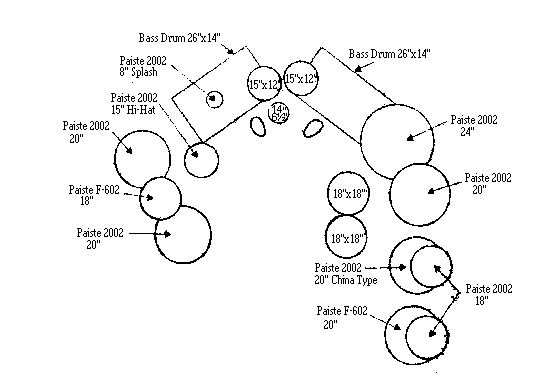 "One moment I wanted to do more bass-kicks, but if I did three fast kicks with my feet, the second and third kick weren't as loud as the first one. Then I took a double-bass combination but it took me more than a year before I could handle it. I never practised, except for when I just started. The last twelve years not. A lot of people are surprised when they hear that and tell me I would be much better if I did. Maybe they're right, but I'ld loss my aggression, start to look like a machine. What's the use to practise hours and hours on your own. I'm too old for that. I rather go drink a beer in the pub."
"One moment I wanted to do more bass-kicks, but if I did three fast kicks with my feet, the second and third kick weren't as loud as the first one. Then I took a double-bass combination but it took me more than a year before I could handle it. I never practised, except for when I just started. The last twelve years not. A lot of people are surprised when they hear that and tell me I would be much better if I did. Maybe they're right, but I'ld loss my aggression, start to look like a machine. What's the use to practise hours and hours on your own. I'm too old for that. I rather go drink a beer in the pub." Cozy's drumkit today is mainly from the 9000-series of Yamaha. He's got a very special snare-drum, Yamaha built it, but it's still a prototype and not yet for sale in the shops. That same snare is partly responsible for the characteristic sound of Cozy. He also had something to say about him leaving Rainbow after five years: "I left because the band wasn't developing any further and Ritchie had an even bigger ego than me and I had enough of it after five years. We just got fed up with each other. He's an excellent guitarplayer, but not a friend. And the music became too poppy and was too different of the starting-point in the beginning. For one or the other reason Blackmore wanted to be a popstar and now he still thinks he is Ritchie Blackmore, who's mean and moody. Maybe you can fool your audience, but not yourself." He himself got involved with Michael Schenker and is present on many sessions. He's on Bernie Marsden's second album ("I only had the time for one track"), on Graham Bonnet's LP ("I was very satisfied with bassplayer Gary Twigg") and also on the new Young & Moody-album. There are stories about sessions with Robert Plant, former singer of Led Zeppelin, but Cozy don't wanna tell much about it. "I'm not sure, some tracks maybe will be on the album, others don't." "If it comes to technique Simon Philips is the best drummer in England on the moment. John Bonham was the best and it's a pity he's no longer amongst us. I like Buddy Rich and in the early days Louis Bellson." Tony Horkins, International Musician and Recording World December 1981 GILLAN FINALLY IN HOLLAND Gillan will finally play Holland. Last year they cancelled twice a show on the last moment. First last May in Wageningen, later in June a festival in The Hague. Ironically, the group that replaced Gillan for that last show, Tygers Of Pan Tang, will be now their support-act. Gillan just did a monstertour in England of 43 concerts. The dates of the shows in Holland are: 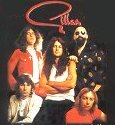 GILLAN with support-act TYGERS OF PAN TANG: - Tuesday 26th January: ARNHEM Stokvishal - Wednesday 27th January: DEN BOSCH Casino - Thursday 28th January: LEIDEN Stadsgehoorzaal Check the musicpress because it won't be the first time it got cancelled. M.S.G. IN UTRECHT This was the second concert of MSG in Holland. I didn't see the first show, which was on Pinkpop. I don't like to go to these festivals with ten bands with all ten a different musicstyle. And in September Schenker and co played the Muziekcentrum Vredenburg in Utrecht. It looked very promising as this venue is known for a good acoustic sound. I notice many Rainbow fans and the atmosphere was great. 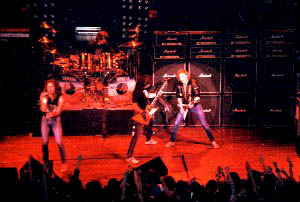 The support-act reminded me of Rainbow's first show in Holland. Then AC/DC was the support-act, now with MSG it was the Starfighters; I'd seen them before in England some weeks ago.
The support-act reminded me of Rainbow's first show in Holland. Then AC/DC was the support-act, now with MSG it was the Starfighters; I'd seen them before in England some weeks ago.They are in the AC/DC style, not surprisingly as one of their members is a grand-nephew of the Young brothers, there's music in that family. They weren't that good, the singer had a cold, but they warmed up the crowd and that was the most important. Then there was a short pause. On the stage we saw a large row of Marshall-towers, still only two were in function (yes, Schenker knows how to steal the show). After the intro tape with music of Wagner, which sounded real bombastic and German, they opened with "Are you ready" of their first album. Then followed many highlights of their two albums. They played great, the sphere in the band was (I must say looked) good. The sound was also very good, so my fear after the poor second album was unfounded. Paul Raymond switched many times between guitar and keyboards. Michael himself played very solid and had a great time. He did the duckwalk of Chuck Berry perfectly. The Rainbow-fans ofcourse came to see in the first place Cozy Powell. He's not changed a bit since he left Rainbow. He still got the same drumkit and even uses the same lightshow in MSG. His drumstyle is still the same. 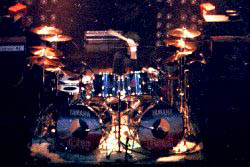 Solid, battering, sweaty: every hit on his drums is telling. In the last issue I wrote it was good to hear another drumsolo in Rainbow than Cozy's one. But I was glad to hear it again in Utrecht. Cozy still stands at the top. Normally I don't like these long drumsolos, but I didn't get bored a second when Cozy did his ten minutes taking solo. The solo existed of two parts. I both parts we heard a tape with classical music. I don't know what the first part was, the second part was
for sure the old solo he did with Rainbow: Tchaikovsky's 1812 Overture. Just marvellous!
Solid, battering, sweaty: every hit on his drums is telling. In the last issue I wrote it was good to hear another drumsolo in Rainbow than Cozy's one. But I was glad to hear it again in Utrecht. Cozy still stands at the top. Normally I don't like these long drumsolos, but I didn't get bored a second when Cozy did his ten minutes taking solo. The solo existed of two parts. I both parts we heard a tape with classical music. I don't know what the first part was, the second part was
for sure the old solo he did with Rainbow: Tchaikovsky's 1812 Overture. Just marvellous!I think the musical highlights were "Lost horizons" and "Let sleeping dogs lie". Ofcourse we also got UFO's "Doctor doctor" and the encore "Ready to rock" which the gentlemen pour Spa-water on each other. The level of the show was high and I was very surprised to hear that after the European Tour both Gary Barden and Paul Raymond had left the group. That means we'll get a new voice for this band. Anyway this was a very successful concert! RECORD TALK THE RODS THE RODS Arista 203 925 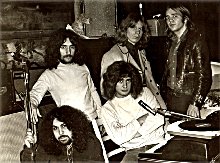 Not many people will be familiar with the name "The Rods". The name David Feinstein is maybe even less familiar. David is a nephew of Ronnie Dio. So here's a short introduction: Autumn 1967 Ronnie Dio (bass and vocals) and guitarplayer Nick Pantas make an end to The Prophets to start together with Gary Driscoll (drums), Doug Thaler (keyboards) and Ronnie's nephew David Feinstein on guitar The Electric Elves, later The Elves. In the summer of 1970 the group is involved in a car accident, which killed Pantas.
Not many people will be familiar with the name "The Rods". The name David Feinstein is maybe even less familiar. David is a nephew of Ronnie Dio. So here's a short introduction: Autumn 1967 Ronnie Dio (bass and vocals) and guitarplayer Nick Pantas make an end to The Prophets to start together with Gary Driscoll (drums), Doug Thaler (keyboards) and Ronnie's nephew David Feinstein on guitar The Electric Elves, later The Elves. In the summer of 1970 the group is involved in a car accident, which killed Pantas.Mickey Lee Soule (keyboards) then joins the group (now named ELF) while Thaler picks up the guitar, but soon leaves the band. Dio-Feinstein-Soule-Driscoll are noticed in 1972 by Roger Glover and Ian Paice, who together produced the first ELF album. We hear on this album the sold guitarplaying of Feinstein. He left the group in 1973 because he didn't like the touring (Elf often was support-act for Deep Purple). ELF continued with guitarplayer Steve Edwards and was in 1975 the base for Blackmore's first Rainbow-album. We hardly heard anything of Feinstein the last 8 years. 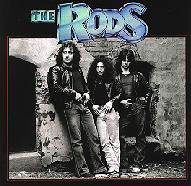 We don't know what David was doing these years, but he didn't forgot how to play guitar. David is now leader of the Rods and their debut album is very fresh. The other members in the band are drummer Carl Canedy and bassplayer Gerry Bordanero. Fernstein and Bordanero produced this LP with ten tracks including two covers. The album contains six highlights and four weaker songs. Firstly the weaker songs: "Music man" has a nice riff, but a poor chorus. "Get ready to rock'n'roll" is an average song and "Rock hard" is weak but has a good solo. "Roll with the night" is a poor boogie.
We don't know what David was doing these years, but he didn't forgot how to play guitar. David is now leader of the Rods and their debut album is very fresh. The other members in the band are drummer Carl Canedy and bassplayer Gerry Bordanero. Fernstein and Bordanero produced this LP with ten tracks including two covers. The album contains six highlights and four weaker songs. Firstly the weaker songs: "Music man" has a nice riff, but a poor chorus. "Get ready to rock'n'roll" is an average song and "Rock hard" is weak but has a good solo. "Roll with the night" is a poor boogie.But there are also good songs. "Power love" has a great guitarline. "Crank it up" is a logical follow-up with solid drums. After listening a few times to "Hungry for love" I underwent the power of it. The ballad "Woman" has an excellent prima solo at the end. And then there are two covers. "Ace in the hole" (I don't know the original) is a slow song, well sung by Bordanero. And finally the highlight, "Nothing going on in the city", written by the Dutch guitarplayer Robbie Elzinga, original on the White Honey album, with female singer Hanneke Kappen. The Rods-version is even better than the original. It swings like hell. I haven't said anything about the quality about Fernstein's vocals. It's not as good as his famous nephew, but he's very good. He knows his limitations. His guitarplaying is only got better since the first Elf album in 1973. GRAHAM BONNET LINE-UP Vertigo 6302 151 (Phonogram) Bonnet's first album after Rainbow (his third solo-album) took along time. Maybe caused by the fact that the people, he wanted to play on the album, didn't had the time right away. Not less than 16 musicians he used: Cozy Powell (all eleven tracks on drums), bassplayer Gary Twigg (6 songs), bassplayer Chrissie Stewart (4), bassist Neil Murray (1), guitarplayer Micky Moody (all songs), Quo man Francis Rossi (2), Quo colleague Rick Parfitt (1), Quo keyboardsman Andy Bown (1), Adrian Lee on synthesizer (6), saxophonist Mel Collins (1), Jon Lord (1), keyboardsplayer Ian Lynn (2), John Cook on keyboards (4), Russ Ballard (1), guitarist Kirby (1) and Martin Ditcham on tambourine (3).  We hear Powell, Bonnet and Moody on every songs and that means we can find back a certain line. Like expected Bonnet haven't written any song. The man can sing but can't write. We get 8 covers and three songs written by the duo Bob Young-Micky Moody.
We hear Powell, Bonnet and Moody on every songs and that means we can find back a certain line. Like expected Bonnet haven't written any song. The man can sing but can't write. We get 8 covers and three songs written by the duo Bob Young-Micky Moody."Line-up" was at first a disappointment because I expected material that was going to be close to Rainbow songs like "All night long" but that didn't happen. Graham did what he wanted to do and we must respect that. The first single "Night games" is here in a remixed version, it sounds less powerfull than the single-mix. We also find back the b-side, the excellent "Out on the water" (Young & Moody) on this LP. The lesser second single "Liar" is, like the third single in England, "That's the way that it is" also present. This old Phil Spector-composition is without doubt one of Graham's own favorites, but it does this album no good. He also likes Chuck Berry and thank God Bonnet didn't choose to do another version of "Johnny B Goode", "Bye bye Johnny" or "Roll over Beethoven", we heard these often enough. No, we get the less known "Anthony boy", which has a big part for the brass section. "Dirty hand" and "Can't stand in the open" are Young & Moody compositions. The first swings fine, but the title is repeated too often. The second is also fine, including a slide-solo of Moody. Leave us with three more songs, not real highlights. The old Kinks-song "Set me free" (fine choice) is done very original, especially the intro. "SOS" is (just like "Liar") written by Russ Ballard, and Russ himself plays guitar on this one. The song is less predictable and Bonnet has to give it all. My favorite of the album is the ballad "I'm a lover", Blackmore claimed Graham couldn't sing ballads, but then he's talking about a Blackmore ballad, because Graham showed us years ago (remember "Only one woman") that he can DO it his way. In "I'm a lover" he proves it again. It's hard to give a general view about "Line-up". This record is too varied. It's not what I expected, but Bonnet won't care of this album is going to be a huge success. He obvious enjoyed himself and that what count. It's a lot heavier than his first two solo albums, Cozy en Micky Moody are to blame for that. One more thing: on the frontcover we see Graham in five different poses with seven colours, in order of a rainbow. Is that because it's so varied? BLACK SABBATH MOB RULES Vertigo 6302 119 RIFF RULES Who read my review about "Heaven and hell" some time ago, know why I didn't like this band after two albums ten years ago. For the same reasons I think the new Sabbath album is a lot less interesting than the last one: the riff took the power again in the Sabbath-sound and I don't like that. "Heaven and hell" showed a new freshness, we didn't expect to hear from Black Sabbath and was we have Ronnie James Dio to thank for that. On "Mob rules" they take a step back, despite the arrival of drummer Vinnie Appice. This record comes in a macabre cover, and again we don't get any groupphotos or lyrics, but we get used to that. Pity! Unfortunately. This record is again perfectly produced by Martin Birch. And we hear on keyboards one Geoff Nichols. Ronnie wanted a keyboardplayer (see the last issue) and he got what he wanted as this bloke did also went on tour in the States with Black Sabbath, so we can call him the fifth member of the band. 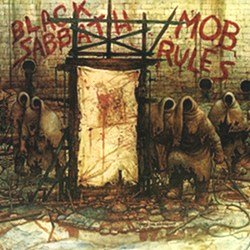 The album opens like "Neon knights" with "Turn up the lights". Again the comparison with Rainbow featuring Dio comes lookin' around the corner. A fine opener. "Voodoo" takes just long enough not to get boring, because the riff of the song is not that strong. A fine acoustic piece opens "A sign on the southern cross", but then we get the old fashioned Sabbath-banging.
The album opens like "Neon knights" with "Turn up the lights". Again the comparison with Rainbow featuring Dio comes lookin' around the corner. A fine opener. "Voodoo" takes just long enough not to get boring, because the riff of the song is not that strong. A fine acoustic piece opens "A sign on the southern cross", but then we get the old fashioned Sabbath-banging.The superheavy riff is too much for me, but old Black Sabbath-freaks will love it. It's too long to keep thrilling the whole track. Next we get an electronic experiment by Iommi. On other albums he also used to do this and I still don't know why. The title "E5-150" refers to some kind of equipment. Live they use this piece on tape before the show starts, and than it's got a function. The titlesong makes me forget all the disappointments, great song "If you're listening to fools, the mob rules." Indeed Ronnie, you can't start nothing on your own to the masters of power. Side two opens (again) with a very heavy riff in "Country girl". Alright, I know it: Black Sabbath IS a riffband but I like to hear now and again some fresh riffs. Ronnie couldn't think of anything else for the melody of the vocals than to sing along with the guitar riff, not the most difficult solution. "Slipping away" is much better, here the riff is backing up the melody of the vocals. the fantasy of a guitar and bass, who both do short solos, is every nice and not forced. "Falling off the edge of the world" is a jewel. The first part is very modest, backed up by the synthesizer, and in part two all hell's breakin' loose. Iommi gives us a masterpiece and the voice of Dio fits in perfectly. The album ends excellent with a ballad (it's slow, but never gets romantic) "Over and over". "Mob rules" is not a bad album, but it didn't got to the level of "Heaven and hell". On this moment it's not known if the group after the English tour late December, early January also will play in Holland. At least we will be able to listen to the band live because this year (expected in May or June) they will release a double-live-album. M.S.G 2 MICHAEL SCHENKER GROUP Chrysalis 203 957-320 PRODUCTION MOCKERY 1981 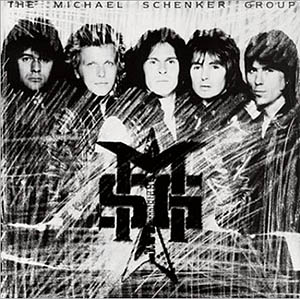 About the second (actually first) album by MSG we can keep it short. If you're not disappointed, you can't be a Schenker and certainly can't be a Powell fan. This record is totally screwed up by Ron Nevison (he made his name with UFO).
About the second (actually first) album by MSG we can keep it short. If you're not disappointed, you can't be a Schenker and certainly can't be a Powell fan. This record is totally screwed up by Ron Nevison (he made his name with UFO).Both Schenker and Powell made their excuses in many interviews for the wrong sound of the album. They didn't had their hands in it so they're not to blame. The group was almost six months busy and according to remarks of the mentioned gentlemen it's been a torture. The compositions are not bad, no way, but Nevison was apparently the boss in the studio and he decided how the end result was. The result: Schenker doesn't sound like Schenker and Powell, well, the cover says it's Cozy but I can't hear it because the typical sound of Cozy is lost in the mix. 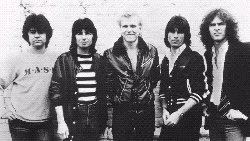 I won't mention the sound anymore. It's just too bad. Compositional there's more to enjoy. Side one has four good tracks, first the commercial "Ready to rock" (it's their single), the restrained "On and on", the surprising "Attack of the mad axeman" and the best track of the album "Let sleeping dogs lie".
I won't mention the sound anymore. It's just too bad. Compositional there's more to enjoy. Side one has four good tracks, first the commercial "Ready to rock" (it's their single), the restrained "On and on", the surprising "Attack of the mad axeman" and the best track of the album "Let sleeping dogs lie".On side 2 we get the nicely built up "I want more" (almost 7 minutes) and "Looking for love". A bit disappointing is the last song "Secondary motion" but really disappointing is the written and sung by Raymond "Never trust a stranger". Conclusion: a weird record, good compositions, but they sound pretty bad. In the mean time singer Gary Barden and Paul Raymond are fired and there are strong rumours about a new band with Powell, Robert Plant and Jimmy Page while the two people who left haven't been replaced yet. Is Schenker, the bad boy, again left alone? Time will tell. This could have been the best album of 1981, but it's nothing more than the production flop of the year. Send Nevison back to school and let's Schenker talk again to Martin Birch or Roger Glover and maybe everything will turn out fine for 1982. COZY POWELL TILT Polydor 2490 163 POWELL SPLITTED  On his second solo album we can recognized Cozy far better than on "MSG". "Tilt" has two sides. One side has vocals and the other is instrumental. Side one opens with a funky beginning in "The right side", featuring England's most asked session-saxophonist Mel Collins in a swinging leading role. Could even be a success in the disco. By the way, no guitars in this song.
On his second solo album we can recognized Cozy far better than on "MSG". "Tilt" has two sides. One side has vocals and the other is instrumental. Side one opens with a funky beginning in "The right side", featuring England's most asked session-saxophonist Mel Collins in a swinging leading role. Could even be a success in the disco. By the way, no guitars in this song."Jekyll & Hyde" is a bit indistinct to me. "Sooner or later" reminds me sometimes at "Since you been gone" (yes indeed), it's poppy and obvious meant to be a single. On these three songs we hear Chris Glenn of MSG on bass. The vocals are by Elmer Gantry, before in Stretch ("Why did you do it?"). The last track is a composition by Powell-Murray-Airey, still the last one doesn't play on the track. The song is from the Hammer days (see the story about Don Airey), "Living a lie" was recorded in 1976 by Babe Ruth on the album "Kid's stuff" (then also with Bernie Marsden) and sounds here very simular. Frank Aiello does the vocals and we know him of the only album by Cozy's Bedlam. Side two is more like "Over the top". The music is very jazzy. We hear two pieces that were left from the sessions of Jeff Beck's latest LP "There and back". Jan Hammer wrote them, "Cat moves" and "Hot rocks". In both tracks Beck steals the show. In the first song we hear Jack Bruce on the bass, but he's replaced in the second song by the synthesizer-bass of John Cook. Don Airey does the same in the other two tracks "Sunset" and the flashy "The blister", where we hear how good Gary Moore still can play in the same direction of Beck. "Tilt" is not a real drummers record (even the solo is not present), although Cozy is clearly present. I think it's a great record, only a vocal and an instrumental side is a bit of a weird idea. RAINBOW THE BEST OF RAINBOW Polydor 2675 223 UNNECESSARILY OVERVIEW I'm often surprised by the releases of the many compilation albums. Every time I ask myself: why? A compilation album can have many reason, like the group has put to an end, the group has changed to another recordlabel, the group wants to end a period, etc. All these cases show there's something going on with the band. But most of the time it's just the recordcompany who wants to earn a little extra. 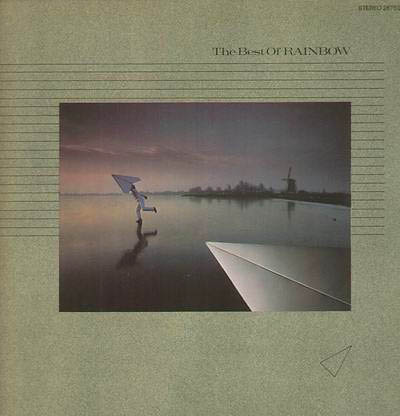 Well, the first Rainbow-compilation we get after five studio-albums. And I ask myself indeed: why? Who's idea was this: Polydor or Rainbow? I don't know the answer yet. In the last issue I said after the Rainbow-concerts that they were doing a "Greatest Hits" show. When I heard this record it frightened me again. Is Blackmore going to put an end to Rainbow? Is there a musical change of direction? With the arrival of new keyboardsman Rosenthal they will record a new album, so the band will continue and a new musical direction doesn't sound very likely. So it looks clear that it must be an initiative of Polydor to make some extra money.
Well, the first Rainbow-compilation we get after five studio-albums. And I ask myself indeed: why? Who's idea was this: Polydor or Rainbow? I don't know the answer yet. In the last issue I said after the Rainbow-concerts that they were doing a "Greatest Hits" show. When I heard this record it frightened me again. Is Blackmore going to put an end to Rainbow? Is there a musical change of direction? With the arrival of new keyboardsman Rosenthal they will record a new album, so the band will continue and a new musical direction doesn't sound very likely. So it looks clear that it must be an initiative of Polydor to make some extra money.It's known that a compilation album is cheap and easy to get out. The songs are ready. Take some songs of different albums, put them in a new order and that's it. In difficult times for the record companies it's handy to do such a cheap production, and the fans doesn't pay a penny less for it. For whom this "Best of Rainbow" is interesting? The real Rainbow-fan got everything already, so not for them. The album could be interesting for a group of people, who like Rainbow but don't buy any of their albums that quickly. Or the group of people who just don't have the money for buying all the records they like. The reports from England tell there's enough interest for this album (it's in the top 20), but overhere there's not that much of interest. Let's go to the record itself (finally). The two records come in a striking cover. Striking, because just like on "Difficult to cure" the name of the group hardly stand out (unlike all the other albums) and again there's no rainbow on this cover. The design is by the English Hypgnosis and shows a typical Dutch landscape. This is not what I expected to ever see on a Rainbow cover. On the inside cover we'll see photos of the members of the group. Notable is the lack of photos of old members (except for Powell), especially because most of the material is from old line-ups. All songs are remixed by Roger Glover and that has some advantages. The tracks from the first Rainbow album, "Man on the silver mountain", "Sixteenth century greensleeves" and "Catch the rainbow", sounds now much more clear. From the Rising album we get "Stargazer", "Starstruck" and "A light in the black". From "Long live rock'n'roll" there are "Gates of Babylon", "Kill the king" and the titletrack. "Down to earth" is present with "All night long" (the English single-mix which wasn't used in Holland), "Since you been gone", "Eyes of the world" and "Lost in Hollywood". From "Difficult to cure" we hear the singles "I surrender" (fine new mix) and the hit "Can't happen here" plus the never on album released "Jealous lover" (here we got it on a 12-inch), which look like bait for the ones who missed that 12-inch single, it's not one of Rainbow's real highlights. You always can argue about what songs should have been on it (I would have like to see "Temple of the king" on it), but I think the most important songs are present. Maybe this record is an outcome for people who don't have all the albums. Maybe "The Best of Rainbow" will give the band some new fans, but for the real fans this is an unnecessarily overview. They would be more pleased with a live-album. GILLAN DOUBLE TROUBLE Virgin 301 804-406 TOO MUCH ! 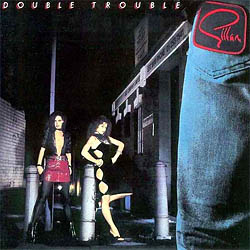 Original (that's before the departure of Torme) the plan was to release a studio LP in the autumn and to do a live-album in 1982. Ian decided to do it different. Both plans were put together and so we get the double album "Double trouble", a studio and a live album package. "Double trouble" is produced by Steve Smith. Ian was at first disappointed, but later enthusiastic.
Original (that's before the departure of Torme) the plan was to release a studio LP in the autumn and to do a live-album in 1982. Ian decided to do it different. Both plans were put together and so we get the double album "Double trouble", a studio and a live album package. "Double trouble" is produced by Steve Smith. Ian was at first disappointed, but later enthusiastic.so we get the double album "Double trouble", a studio and a live album package. "Double trouble" is produced by Steve Smith. Ian was at first disappointed, but later enthusiastic. My vision is the same, even after listening to it many times. I miss the sound of Torme. Janick Gers is a good guitarplayer, but the sound of his instrument is not that good. Smith has given the group another sound, I don't like it that much but I can get used to it. The studio album get a pass. The live album however is very poor. The sound is terrible, partly caused by the circumstances, the outdoor in Reading. Besides you hardly hear the band play together. A long intro by Towns, a drumsolo, a bass solo, etc. so we get the double album "Double trouble", a studio and a live album package. "Double trouble" is produced by Steve Smith. Ian was at first disappointed, but later enthusiastic. In "If you believe me" we hear Torme because this was recorded before, but it's not my favorite track. On the other tracks it's Gers, he just joined the band and it sounds like he then didn't yet became used to play with the others. To me it's a big step back for Gillan. WIE WANT MOOR ...the last page...we haven't heard that much of whitesnake the last three months....they still did a few concerts in germany....so the group still lives.....rumour said they recorded a new album....in japan is a new double live album out of the michael schenker group...in the states a 12 inch single of rainbow with...i surrender...can't happen here...jealous lover...weiss heim...child in time is again released on single in a edited version....de lp version of woman from tokyo is on the back....cozy powell released exclusively in holland the single the right side...the same goes for anthony boy of graham bonnet.....don airey has joined on 1 january 1982 ozzy osbourne...... © Rainbow Fanclan 1979-1984
|